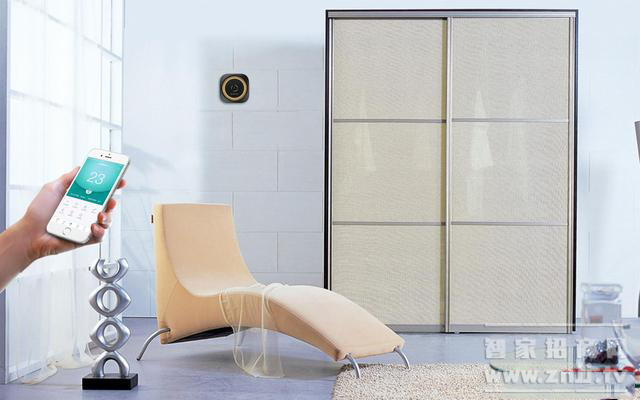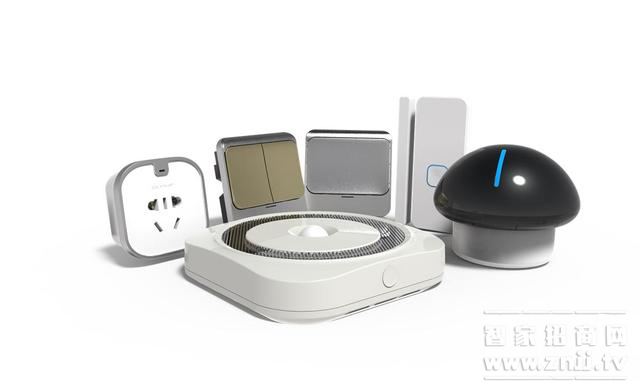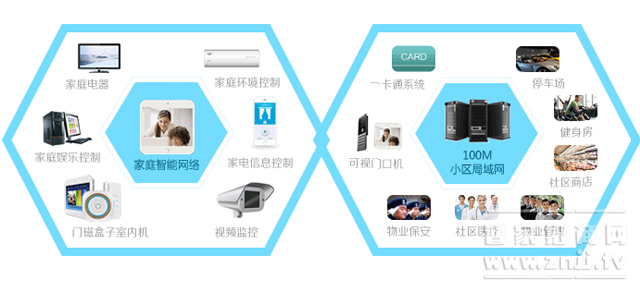Any change in the times is accompanied by the rise of new forces. When the smart home concept first entered China, the main manufacturers were foreign companies such as Honeywell and ABB. Smart home solutions in this period generally achieved building energy conservation, intelligent control, and home security by wiring in high-end residential buildings. With the development of Internet of Things and wireless communication technologies, the smart home market has undergone earth-shaking changes, and several new smart home solutions have emerged. From 2014 onwards, the trend of "explosive goods" has become popular in the smart home industry. Large and small manufacturers are committed to seizing the needs of subdivided users and quickly creating a smart home product. Smart switches, smart sockets, smart light bulbs, air purifiers, smart magnetic sensors, infrared remote controls, sensors... all kinds of smart home products emerge one after another. However, after having a high degree of attention, smart home items with good sales performance are minimal. The author believes that this situation of “external heat and internal cold†appears for two reasons: 1. The reason for the product is that the product is not a rigid product and it takes time to integrate into the market. 2. The company itself is responsible for the fact that the manufacturers of R&D products have weaker overall product planning and channel control capabilities. Therefore, after relying on single-product marketing breakthroughs to obtain early-stage attention, they often have weak succession. How to break the dilemma, innovation is the key. Only by combining product and enterprise innovation, this new generation of forces can continue to grow and lead the smart home market. At present, smart home companies such as Xiaomi, Oeruibo, and Dudu E, etc. are deploying smart scene control as the center, continuously enriching their product lines, and ultimately achieving network coverage of smart home products, and curve forming platform vendors. Efficient product development capabilities are the biggest advantages of these companies. Smart home products In addition, once many traditional enterprises are also transitioning across borders, with their shipping and channel advantages, their influx has also brought tremendous changes, such as the smart home system platform launched by Haier and Midea, such as being a smart outlet. Bulls. With the rapid development of the smart home market, many companies have begun the layout of the chip field, but from the perspective of the entire market, smart home product shipments less restrict the input of upstream suppliers. On the one hand, this is because the shipments of new-born smart home companies are not so big. On the other hand, traditional manufacturers are limited by the difficulties in transition and the inconsistency of communication protocols. They have not followed up on new products, and there is a widespread wait-and-see mentality. About how to break the board, domestic smart home companies have given three methods: First, they make model products themselves, and use the demonstration effect to drive customers together to take measures. For example, they provide terminal solutions for customers while providing wireless modules. Second, they do ecology. Integration, such as providing ultra-low-cost wifi modules to the upstream of the industry chain, allowing sufficient data to analyze the background through the module's volume, resulting in extended services; the third is through closer cooperation with the cloud platform to find More value appeal points will be shifted from traditional products to multiple segments in the smart home sector. In 2015, Vanke began to pilot all-intelligent “old apartment†projects. Evergrande handed Tencent a community O2O; in 2016, Midea’s 5M healthy communities successively landed in many provinces such as Hunan, Jiangsu, Zhejiang, and Guangdong. Tooting E also joined hands with Country Garden. China, Vantage, China Vanke, and Xiexin have built dozens of smart communities in provinces and cities such as Sichuan, Chongqing, Tianjin, Hubei, and Heilongjiang. Throughout the country, smart communities are springing up. As for real estate developers, the competition in the property market has become increasingly fierce. The smart community project has not only increased the value of real estate, created an information release platform and system integration service platform, improved the level of community information construction, but also opened an Internet + window And for smart home manufacturers, the company's smart home products also have a huge space for landing and popularization. Smart Community System Many people have heard the names of “community O2O†and “wisdom propertyâ€, and they simply understand the smart community as a community 020, a smart property, or an intelligent community. In fact, the smart community is a comprehensive concept. The content of a complete smart community solution is very rich. Smart homes, smart properties, community O2O, and community B2C are just some of the subsystems. At the end of 2016, the Toot E home provided an example for the Xiaogan Country Garden's customized smart community program. The program included four smart systems: “Smart Home, Travel Care, Smart Garage, and Smart Platformâ€. From the home to the community, it covered the lives of the owners. All aspects. Summary: These several major solutions have their own advantages. Nowadays they are fully integrated into the market. Today's smart home market has become a mainstream trend. In the future, we will surely see more new forces and new smart homes. Solutions, multiple types of companies and solutions to collide with each other, learning and learning, in order to promote market development, technological progress, and ultimately achieve win-win development. Online UPS provides continuous power to critical equipment, eliminating downtime during power outages. It offers protection against voltage fluctuations, spikes, and surges, making it ideal for data centers, hospitals, and other sensitive applications.
It is designed to protect sensitive electronics and prevent data loss or damage caused by sudden power disruptions.The primary function of an inverter UPS is to convert DC (Direct Current) power from a battery into AC (Alternating Current) power that can be used by electronic devices. This conversion is achieved through the use of an inverter, which changes the battery's DC power into the AC power required by the connected equipment.
Our Bosin Inverter with UPS function power frequency energy-saving transformer with full-bridge pure sine wave output, low loss and high efficiency.They can unattended duty-free function may also offer the ability to remotely manage and control the UPS, allowing users to monitor its status, perform diagnostics, and configure settings from a central location.Support a variety of communication interface, remote monitoring via RS232/mobile App/Wi-Fi/GPRS.Automatic start when city power comes.It has three working model:Grid prior, Eco mode, PV prior.
One of the key features of an inverter UPS is its ability to provide uninterrupted power during a blackout. When the main power supply is interrupted, the UPS automatically switches to battery power, ensuring that connected devices continue to operate without any interruption. This seamless transition is crucial for systems that cannot afford any downtime, such as servers, medical equipment, or communication networks.
backup power supply,Online Uninterruptible Power Supply, Industrial power protection, voltage regulation, battery backup Bosin Power Limited , https://www.bosinsolar.com
Solution one: Do smart home products

Solution two: Make a communication module
Solution 3: Make a smart community platform
